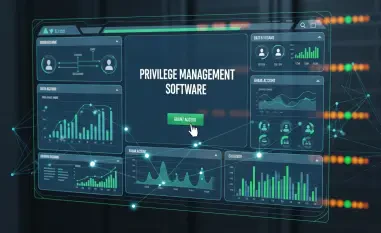Understanding the Critical Role of Endpoint Security
Imagine a sprawling corporate network suddenly grinding to a halt because a single laptop, left unsecured, became the gateway for a devastating ransomware attack, an event that is far from unlikely in today’s digital landscape. Endpoints such as desktops, laptops, mobile devices, and IoT sensors are often the first targets for cybercriminals aiming to infiltrate organizations. These devices, integral to daily operations, represent vulnerable entry points that, if compromised, can lead to data breaches costing millions and causing severe operational downtime. The average cost of a data breach in recent reports stands at a staggering $4.88 million, a figure that underscores the urgent need for robust protection at the endpoint level.
Endpoint security serves as a critical line of defense, safeguarding these devices against sophisticated threats that evolve daily. Unlike traditional security measures focused on perimeter defenses, endpoint security targets the very devices that connect to a network, ensuring they are not exploited as weak links. With downtime potentially costing businesses thousands of dollars per hour, the importance of preventing breaches at the source cannot be overstated. This protection is not just about technology but about preserving trust, maintaining compliance, and ensuring operational continuity in an increasingly digital landscape.
This discussion will delve into why proactive endpoint security is non-negotiable, explore best practices for effective implementation, evaluate solutions for adoption, and look toward emerging trends shaping the future of cybersecurity. By addressing these areas, a comprehensive understanding of how endpoint security can mitigate the risks of costly data breaches will emerge, equipping organizations with the knowledge to act decisively.
Why Proactive Endpoint Security Is Essential
The era of waiting for a cyberattack to strike before responding is over. Proactive endpoint security flips the script by focusing on prevention, aiming to stop threats before they infiltrate systems and cause harm. This shift is driven by the recognition that reactive measures often come too late, after sensitive data has been stolen or operations have been disrupted. By anticipating vulnerabilities and neutralizing risks at the endpoint level, organizations can avoid the catastrophic fallout of a breach.
The consequences of failing to act proactively are severe, spanning financial, reputational, and legal domains. A single endpoint-related incident can lead to hefty regulatory fines under stringent laws like GDPR or CCPA, especially when personal data is exposed. Beyond monetary penalties, the damage to a company’s reputation can erode customer trust, while prolonged downtime halts productivity, piling on additional losses. Proactive endpoint security directly counters these risks by reducing the likelihood of incidents and minimizing their impact if they occur.
Advanced tools play a pivotal role in this proactive stance, with solutions like Endpoint Detection and Response (EDR) and machine learning algorithms offering real-time threat anticipation. These technologies enable continuous monitoring, anomaly detection, and automated responses that outpace human intervention. The result is not just cost savings on remediation but also enhanced operational resilience, ensuring that businesses can maintain momentum even in the face of evolving cyber threats.
Best Practices for Implementing Effective Endpoint Security
Conduct an Asset Inventory and Prioritize High-Risk Endpoints
A fundamental step in securing endpoints is knowing exactly what needs protection. Conducting a thorough asset inventory involves cataloging every device connected to a network, from employee laptops to IoT sensors in a manufacturing facility. Without this clarity, vulnerabilities remain hidden, leaving critical systems exposed to potential exploits. An inventory provides a map of the digital landscape, revealing where security efforts must be concentrated.
Once endpoints are identified, prioritization becomes key. Not all devices pose the same level of risk; those with access to sensitive data or tied to critical operations demand heightened protection. Using risk assessment tools, organizations can rank endpoints based on their potential impact if compromised. This focused approach ensures that resources are allocated efficiently, bolstering defenses where they matter most and reducing the chances of a breach originating from a high-value target.
Case Study: A Financial Firm’s Endpoint Mapping Success
Consider the experience of a financial institution that faced persistent threats due to its vast network of endpoints. By meticulously mapping every device and prioritizing those handling customer financial data, the firm was able to deploy targeted security measures. This strategic focus thwarted a ransomware attempt that could have encrypted critical systems, saving millions in potential losses and proving the value of a well-executed asset inventory.
Implement Automated Response and Patch Management
Speed is of the essence when a threat emerges, and manual responses often fall short in the face of rapid attacks. Automated systems for threat detection, isolation, and remediation are vital to address incidents in real time, minimizing the window of opportunity for attackers. These solutions can quarantine a compromised endpoint instantly, preventing the spread of malware across a network and preserving operational integrity.
Equally critical is patch management, which addresses vulnerabilities that cybercriminals exploit through zero-day attacks or ransomware. Timely updates to software and systems close these gaps, rendering many attack vectors ineffective. Automation in patch deployment ensures consistency and reduces the burden on IT teams, allowing for swift action against known threats without disrupting workflows.
Real-World Example: Retail Chain Avoids Downtime with Automation
A national retail chain once faced a malware outbreak that threatened to shut down its point-of-sale systems during peak shopping season. Thanks to automated patch management and predefined response playbooks, the threat was contained within minutes, with infected devices isolated before significant damage occurred. This quick resolution prevented widespread downtime, safeguarding revenue and customer satisfaction during a critical period.
Harden Attack Surfaces and Enforce Least-Privilege Access
Reducing the avenues through which attackers can strike is a cornerstone of endpoint security. Hardening attack surfaces involves disabling unused ports, removing unnecessary software, and ensuring all systems are updated to eliminate exploitable weaknesses. These actions shrink the potential entry points, making it harder for malicious actors to gain a foothold in a network.
Complementing this is the enforcement of least-privilege access policies, which restrict user permissions to only what is necessary for their roles. By limiting access, the risk of insider threats or compromised credentials leading to widespread damage is curtailed. This approach also prevents lateral movement by attackers, confining any breach to a smaller segment of the network and mitigating its overall impact.
Example: Healthcare Provider Limits Breach Impact
A healthcare provider faced a potential crisis when an employee’s credentials were stolen, risking exposure of patient records. Because least-privilege access was strictly enforced, the attacker could not access sensitive databases beyond the compromised account’s scope. This containment strategy significantly reduced the breach’s severity, protecting both patient privacy and the organization’s compliance standing.
Invest in Continuous Monitoring and Staff Training
Threats do not adhere to a schedule, making continuous monitoring an indispensable practice. Deploying adaptive controls that track endpoint activity in real time allows for the early detection of anomalies, such as unusual login patterns or unauthorized data transfers. These systems can flag potential issues before they escalate, providing a proactive shield against emerging dangers.
However, technology alone is not enough; human error remains a leading cause of breaches. Regular staff training on recognizing phishing attempts, managing alerts, and following security protocols is essential to strengthen the human firewall. Educated employees are less likely to fall for social engineering tactics or ignore critical warnings, enhancing overall endpoint protection.
Case Study: Tech Company Boosts Resilience Through Training
A technology firm grappling with frequent phishing attacks implemented a dual strategy of continuous monitoring tools and comprehensive employee training. Over time, phishing-related incidents dropped by 40%, as staff became adept at identifying suspicious emails and alerts were acted upon promptly. This combined effort transformed the company’s security posture, demonstrating the power of blending technical and human defenses.
Evaluating Endpoint Security Solutions and Adoption Considerations
Proactive endpoint security stands as a formidable barrier against data breaches, significantly bolstering organizational resilience. When selecting solutions, opting for unified platforms that integrate prevention, detection, and response capabilities offers the most comprehensive protection. Such systems streamline security operations, reducing complexity and ensuring seamless coverage across diverse endpoint environments, from corporate laptops to remote IoT devices.
Different organizations stand to gain from tailored endpoint security tools based on their unique needs. Large enterprises with sprawling networks benefit from scalable solutions that manage thousands of devices, while small businesses with limited budgets can leverage cost-effective platforms with essential features. Industries under strict regulatory mandates, such as healthcare or finance, find value in compliance-focused tools that prioritize data protection and audit readiness.
Before adoption, several factors warrant careful consideration. Compatibility with existing infrastructure ensures smooth integration, while scalability guarantees the solution can grow with the organization. Staff readiness to operate new tools and potential challenges like false positives or integration hurdles must also be addressed upfront. Looking ahead, trends such as AI-driven automation and hardware-based trust mechanisms signal exciting advancements that promise to further fortify endpoint defenses, adapting to increasingly sophisticated threats.
Final Reflections
Reflecting on the journey through endpoint security, it becomes evident that proactive measures have reshaped how organizations tackle cyber threats. The best practices explored have provided a robust framework, from mapping assets to automating responses, with each step fortifying defenses against costly breaches. These strategies have proven their worth in real-world scenarios, saving firms from financial ruin and operational chaos.
As a next step, organizations are encouraged to assess their current endpoint security posture and identify gaps that need immediate attention. Investing in unified platforms and committing to continuous training have emerged as actionable priorities. Beyond immediate actions, staying abreast of innovations like AI-enhanced protection offers a pathway to future-proofing against evolving risks, ensuring sustained resilience in a dynamic threat landscape.













